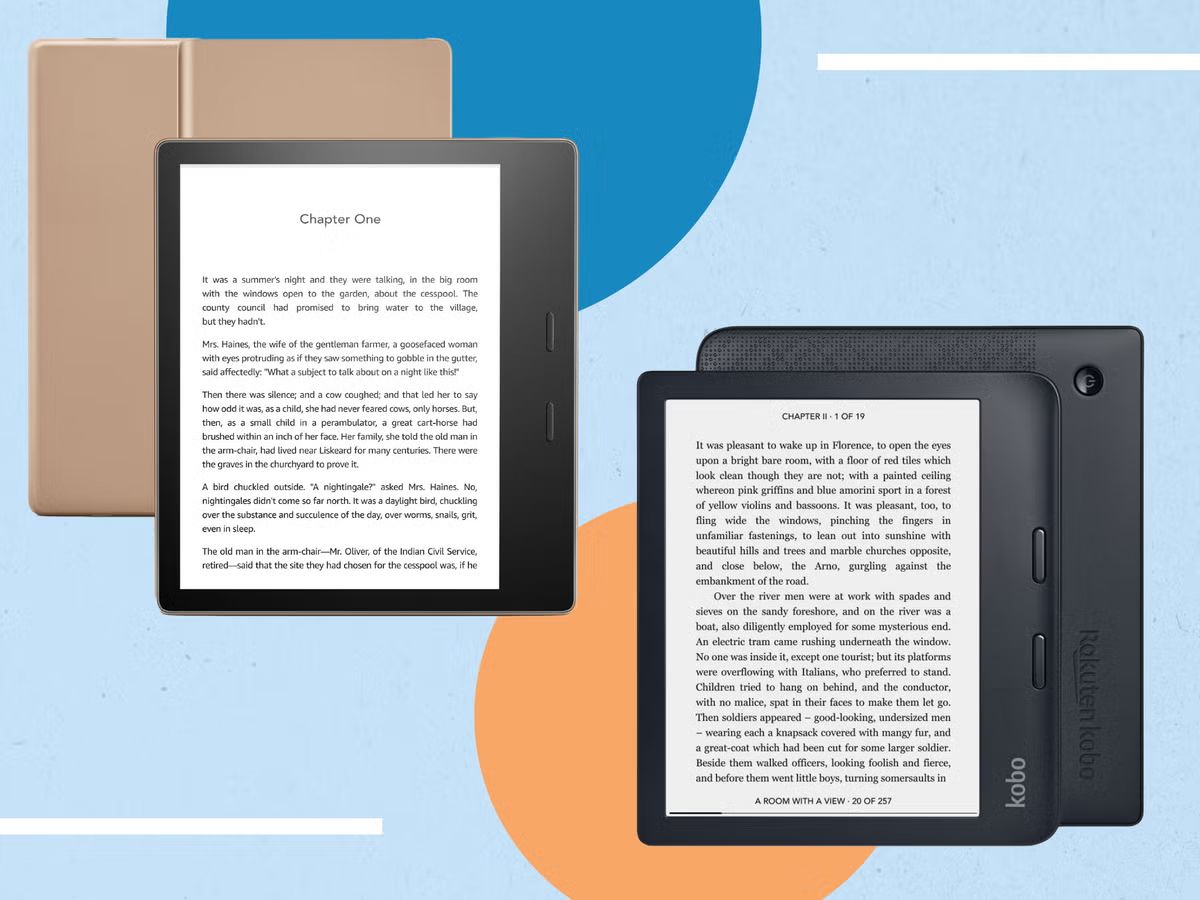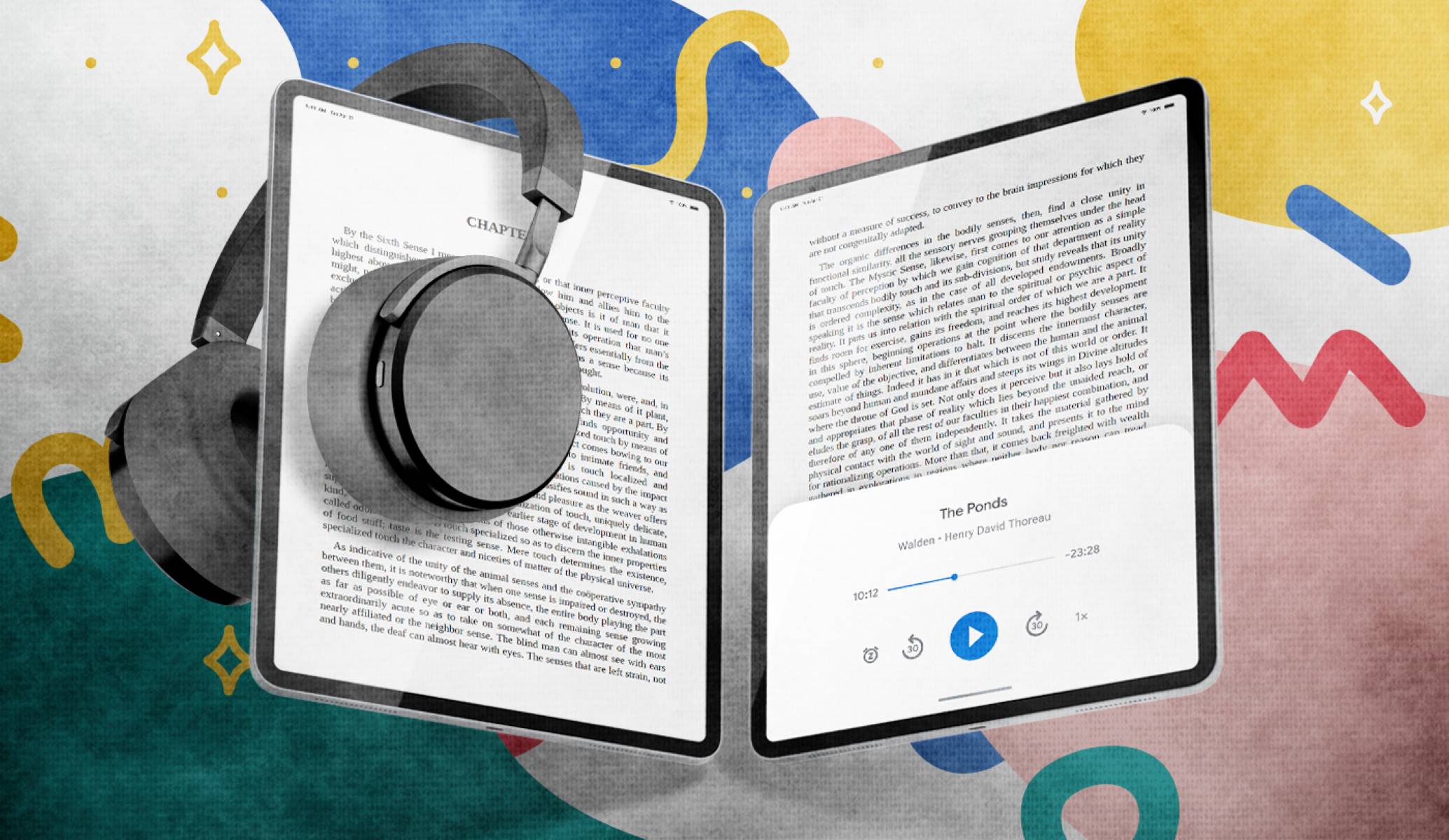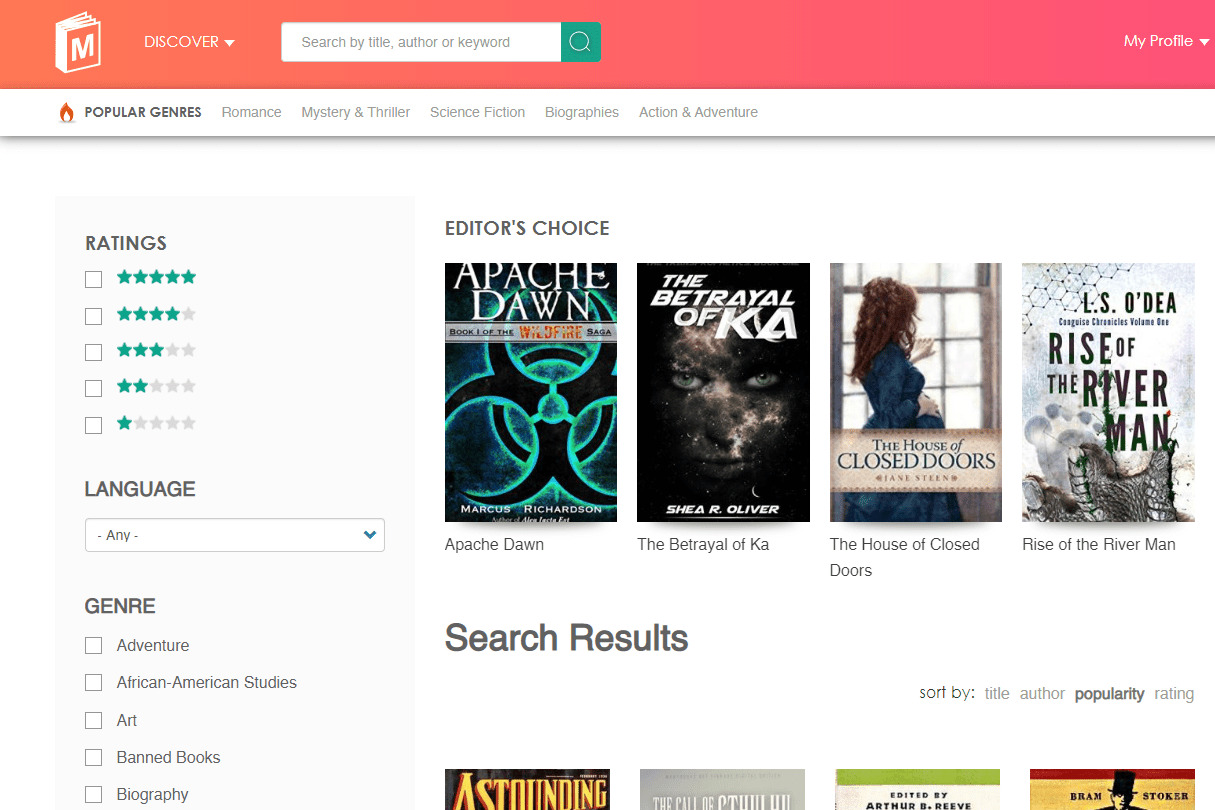Introduction
With the advancement of technology in the digital era, the way we consume books has fundamentally changed. Traditional printed books are no longer the only option available to avid readers. Instead, we now have the choice between eBooks and audiobooks. Both formats have gained immense popularity and offer unique benefits to readers. In this article, we will explore the differences between eBooks and audiobooks, helping you understand which format might be more suitable for your reading preferences.
eBooks, short for electronic books, refer to digital versions of printed books that can be read on electronic devices such as e-readers, smartphones, tablets, or computers. Audiobooks, on the other hand, are audio recordings of books that can be listened to on various devices, including smartphones, tablets, or dedicated audiobook players.
While eBooks and audiobooks share the common purpose of delivering literary content, the medium through which they are consumed and the reading experience they offer differs significantly. Understanding these variations will enable readers to make an informed decision when choosing between eBooks and audiobooks for their reading pleasure.
Throughout this article, we will examine the various aspects that differentiate eBooks and audiobooks. We will analyze the format and medium, the reading experience, portability and convenience, accessibility, cost implications, multimedia elements, as well as retention and comprehension. By delving into these key differences, we aim to provide a comprehensive guide to help you determine the most suitable format for your reading habits and preferences.
Definition of eBook
An eBook, short for electronic book, is a digital version of a printed book that can be accessed and read on electronic devices. It is essentially a text-based publication that has been converted into a digital format and optimized for display on screens. eBooks can be read on a wide range of devices, including e-readers, smartphones, tablets, and computers.
eBooks are typically created using HTML, PDF, or EPUB formats, which allow for flexible formatting and easy navigation. They can include text, images, tables, and even interactive elements, providing a multimedia reading experience. The content of an eBook can encompass various genres, including novels, non-fiction books, textbooks, and even children’s literature.
One of the key advantages of eBooks is their accessibility. With a vast array of online platforms and stores offering eBooks, readers can easily purchase or download titles of their choice with just a few clicks. Additionally, eBooks often have features that enhance the reading experience, such as adjustable font sizes, adjustable background colors, and search functionalities.
Moreover, eBooks offer the convenience of storage and portability. With the ability to store hundreds or even thousands of eBooks on a single device, readers can carry their entire library with them wherever they go. This eliminates the need to carry around bulky physical books, making eBooks an ideal choice for travelers or individuals constantly on the move.
Furthermore, eBooks provide a cost-effective alternative to traditional printed books. Since there are no printing or distribution costs involved, eBooks are often priced lower than their print counterparts. Additionally, eBooks can be easily shared among friends or family members, further reducing the cost of acquiring new titles.
Overall, eBooks have revolutionized the way we consume books, offering convenience, accessibility, and a plethora of features that enhance the reading experience. Whether you prefer to read on a dedicated e-reader or on your smartphone or tablet, eBooks provide a flexible and portable solution to satisfy your literary cravings.
Definition of Audiobook
An audiobook is an audio recording of a book that enables readers to listen to the content rather than reading it visually. It provides an alternative way to consume literary works by immersing listeners in a spoken narrative. Audiobooks are available in various formats and can be enjoyed on a range of devices, including smartphones, tablets, or dedicated audiobook players.
Audiobooks are typically produced by professional narrators or even the authors themselves, bringing the story to life through their voices. They offer a unique storytelling experience, allowing listeners to engage with the book’s characters, plot, and emotions through voice acting and narration.
The popularity of audiobooks can be attributed to their accessibility and convenience. Many audiobooks can be easily downloaded or streamed from online platforms or audiobook stores. This means that readers do not need to physically carry around a book or an electronic device to enjoy their favorite titles. Audiobooks can be listened to while commuting, exercising, doing household chores, or simply relaxing, making them a versatile choice for individuals with busy lifestyles.
In addition, audiobooks provide an inclusive reading experience for individuals with visual impairments or reading difficulties. By listening to the narrated content, people with disabilities can still enjoy literature and access a world of stories and information that might otherwise be challenging to obtain.
One notable advantage of audiobooks is the ability to appreciate the nuanced interpretations and performances of the narrators. A skilled narrator can bring different voices, accents, and inflections to the characters, enhancing the overall listening experience. This added dimension of voice acting can provide a deeper connection with the story and characters, creating a more immersive and engaging experience for the listener.
Another benefit of audiobooks is the opportunity to multitask while “reading”. Unlike traditional books or eBooks, which require the reader’s visual attention, audiobooks allow individuals to listen while performing other activities. This makes them particularly appealing for individuals who wish to make productive use of their time or engage in simultaneous tasks.
In summary, audiobooks offer a unique and immersive way to enjoy literature through spoken narration. They provide accessibility, convenience, and the ability to multitask while experiencing the joy of storytelling. Whether you’re on a long commute or simply looking for an alternative reading experience, audiobooks offer a compelling option for book lovers.
Format and Medium
One of the key differences between eBooks and audiobooks lies in their format and medium of consumption. While eBooks are digital versions of printed books that can be read visually on electronic devices, audiobooks are audio recordings of books that can be listened to.
eBooks are typically available in formats such as HTML, PDF, or EPUB, which allow for flexible formatting and easy navigation. They preserve the original structure of the book, including chapters, sections, and page numbers, ensuring a familiar reading experience. eBooks can be read on a wide range of devices, including dedicated e-readers, smartphones, tablets, or computers. The visual presentation of eBooks allows readers to engage with the text directly and follow along at their preferred pace.
On the other hand, audiobooks are presented in an audio format, allowing readers to engage with the content through sound. Audiobooks are recorded by professional narrators, often with the addition of voice actors for dialogue, bringing the book to life through spoken words. Audiobooks are typically downloaded or streamed from online platforms or audiobook stores, and they can be enjoyed on various devices, including smartphones, tablets, or dedicated audiobook players. The audio medium allows listeners to immerse themselves in the story without the need for visual engagement, making audiobooks a popular choice for individuals who prefer a more auditory and immersive reading experience.
While both eBooks and audiobooks provide access to literary content, the choice between the two formats depends on personal preferences and situational factors. Some individuals enjoy the tangible and visual experience of reading an eBook, being able to highlight text, take notes, and refer back to specific passages. Others appreciate the convenience and sensory experience of listening to an audiobook, allowing them to enjoy books while engaging in activities such as driving, exercising, or relaxing.
It’s worth noting that some titles may be available in both eBook and audiobook formats, allowing readers to choose their preferred medium for a particular book. This flexibility caters to different reading preferences and gives readers the option to switch between formats based on their current needs and circumstances.
In summary, eBooks and audiobooks differ in their format and medium of consumption. eBooks are digital versions of printed books that can be visually read on electronic devices, while audiobooks are audio recordings that provide a spoken narrative. The choice between the two formats depends on personal preferences and the specific circumstances in which the book will be enjoyed.
Reading Experience
The reading experience offered by eBooks and audiobooks differs significantly, catering to different preferences and enhancing the enjoyment of literary content in unique ways.
eBooks provide a visual reading experience, allowing readers to engage with the text directly on electronic devices. The digital format of eBooks offers features such as adjustable font sizes, customizable font styles, and adjustable background colors, allowing readers to personalize their reading experience for optimal comfort. Additionally, eBooks often include interactive elements like hyperlinks, footnotes, and annotations, providing easy access to related information or supplementary content. The ability to search for specific words or phrases within the eBook further enhances the reading experience, facilitating quick references or research.
Furthermore, eBooks offer the convenience of highlighting and taking notes within the text. Readers can easily mark important passages, bookmark pages, and create their own annotations, aiding in research, studying, or revisiting favorite sections. The ability to highlight and annotate digitally saves time and effort compared to doing so in a physical book.
On the other hand, audiobooks provide an immersive and auditory reading experience. By listening to professional narrators or even the author’s voice, listeners can enjoy the story as if they were being told a captivating tale. The use of voice actors to portray different characters adds depth and personality to the narration, amplifying the emotional connection with the story.
Audiobooks provide the added advantage of utilizing intonation, pronunciation, and vocal inflections to convey the author’s intended meaning. The tone of voice used by the narrator can enhance the atmosphere of the story, intensify suspenseful moments, or evoke emotions in ways that reading visually might not achieve. This auditory experience can make the story more engaging and enable listeners to immerse themselves in the narrative.
Moreover, audiobooks allow for a hands-free and multitasking reading experience. Unlike eBooks, which require visual attention and engagement, audiobooks can be enjoyed while performing other activities, such as driving, exercising, or doing household chores. This versatility allows individuals to make the most of their time and engage in reading even when their hands and eyes are occupied.
Both eBook and audiobook formats have their unique strengths, providing different reading experiences. The choice between the two depends on individual preferences, the desired level of interactivity, and the availability of time and attention for visually reading or listening.
In summary, eBooks provide a customizable, interactive, and visual reading experience, while audiobooks offer an immersive, auditory, and hands-free experience. Whether you prefer absorbing the text visually or being captivated by narrators’ voices, both formats provide an enjoyable way to experience literature.
Portability and Convenience
When it comes to portability and convenience, both eBooks and audiobooks offer distinct advantages that cater to different needs and lifestyles.
eBooks excel in terms of portability, thanks to their digital format. With a single device, such as an e-reader, smartphone, or tablet, readers can carry an entire library of eBooks wherever they go. This eliminates the need to carry multiple physical books, saving space and weight while offering a wide selection of reading material at one’s fingertips. Additionally, eBooks can be easily downloaded or accessed online, allowing for instant delivery and access to new titles.
Furthermore, the digital nature of eBooks means that readers can adjust the font size, font style, and background color to suit their preferences and reading comfort. This flexibility allows individuals with visual impairments or reading difficulties to customize the reading experience to their specific needs, making eBooks a more inclusive option.
Audiobooks, on the other hand, offer a different kind of convenience and portability. Since audiobooks are audio recordings, they can be listened to on a variety of devices, including smartphones, tablets, or dedicated audiobook players. The compact nature of these devices makes it easy to carry them around during daily activities, such as commuting, exercising, or running errands.
The hands-free nature of audiobooks also adds to their convenience. Listeners can simply plug in their headphones or connect their devices to speakers and enjoy the book while performing other tasks or engaging in various activities. This multitasking capability allows individuals to make productive use of their time, turning mundane or repetitive activities into enjoyable reading experiences.
Moreover, audiobooks eliminate the need for visually engaging with the text, making them accessible to individuals with vision issues or those who prefer a more passive reading experience. This inclusivity enhances the convenience of audiobooks, allowing a broader audience to access and enjoy literary content.
Both eBooks and audiobooks offer unique portability and convenience features, enabling readers to enjoy books on the go. The choice between the two formats ultimately depends on individual preferences, lifestyle, and the specific situations in which reading is desired.
In summary, eBooks provide portability by allowing readers to carry a vast library in a single device, while audiobooks offer convenience through hands-free listening and the ability to engage in other activities while enjoying a book. Whether it’s the flexibility of adjusting font sizes or the ability to multitask while listening, both formats provide convenient ways to indulge in the pleasure of reading.
Accessibility
Accessibility is a crucial aspect to consider when comparing eBooks and audiobooks, as it determines the inclusivity and availability of literary content to a wide range of individuals.
eBooks offer a high level of accessibility due to their digital nature. They can be easily purchased, downloaded, or accessed online from various platforms and stores. This eliminates the need to visit physical bookstores or wait for shipping, providing instant access to a vast array of titles.
Furthermore, eBooks often include features that enhance accessibility for individuals with visual impairments or reading difficulties. Adjustable font sizes and styles allow readers to customize the reading experience according to their comfort and visual abilities. Some eBooks also provide the option for text-to-speech functionality, which converts the text into spoken words, aiding individuals with visual impairments or those who prefer to listen rather than read visually.
Additionally, eBooks offer the convenience of digital search capabilities. Readers can easily search for specific words or phrases within the text, making it easier to find information or locate specific sections of interest. This feature can be particularly helpful for research purposes or when seeking specific information quickly.
On the other hand, audiobooks provide a different accessibility experience. Audiobooks are a valuable medium for individuals with visual impairments, as they bypass the need for visual engagement. By providing a spoken narrative, audiobooks allow individuals with visual limitations to access and enjoy literature independently.
Audiobooks also cater to individuals with reading difficulties, dyslexia, or language barriers. By listening to the narrated content, listeners can bypass challenges associated with reading, such as decoding words or struggling with grammar and syntax. This allows readers to focus on understanding the content and immersing themselves in the narrative without the added stress or frustration often encountered with traditional reading.
Moreover, the availability of audiobooks in different languages and accents enhances accessibility for individuals who may not be fluent in the language of the written text. By listening to the spoken word, individuals can improve their language skills, pronunciation, and comprehension.
Overall, both eBooks and audiobooks contribute to enhancing accessibility, albeit in different ways. eBooks offer visual accessibility features and the flexibility of customization, catering to various visual needs. Audiobooks, on the other hand, provide auditory accessibility, enabling individuals with visual impairments, reading difficulties, or language barriers to enjoy books independently. The choice between the two formats depends on individual preferences, needs, and reading abilities.
In summary, eBooks and audiobooks provide accessibility options for readers by overcoming physical and reading barriers. Whether it’s through adjustable visual features in eBooks or spoken narratives in audiobooks, both formats strive to make literature accessible to a broad audience.
Cost
When considering the cost of eBooks and audiobooks, several factors come into play, including the initial purchase price, ongoing expenses, and the overall value for the reader.
In terms of initial purchase price, eBooks are generally more affordable than their printed counterparts. Since there are no printing or physical distribution costs involved, eBooks are often priced lower than physical books. Additionally, many classic literature titles and out-of-copyright books are available for free in eBook format, offering a cost-effective option for readers to explore timeless works.
Moreover, eBook prices can vary depending on factors such as publisher, popularity, and exclusivity. It is common to find discounted or promotional prices on eBooks, making it easier for readers to access a wider range of titles compared to purchasing physical copies.
Audiobooks, on the other hand, tend to be priced higher than eBooks due to additional production costs involved in creating high-quality audio recordings. The fees for professional narrators, voice actors, and sound engineers contribute to the overall cost of producing audiobooks. In some cases, exclusive narrations by well-known or popular voices may command premium prices.
However, audiobook subscription services have gained popularity, offering a more cost-effective option for avid listeners. These services typically charge a monthly or annual fee, granting subscribers access to a catalog of audiobooks, often including new releases and bestsellers. This subscription model allows readers to enjoy multiple audiobooks for a fixed fee, offering better value for those who consume audiobooks regularly.
Additionally, it’s worth considering the ongoing expenses associated with eBooks and audiobooks. With eBooks, readers can find a vast selection of free or low-cost titles, reducing the need for continuous spending. However, purchasing new eBooks does incur additional costs, particularly for popular titles or new releases.
For audiobooks, subscription services provide a cost-effective way to access a large library without the need to purchase individual titles. However, some listeners may still choose to buy audiobooks individually, which can result in higher costs compared to eBooks.
Ultimately, the cost of eBooks and audiobooks depends on individual reading preferences, the extent of the reader’s desired library, and the availability of subscription services. Both formats offer various pricing options to accommodate different budgets and ensure access to literature for a wide range of readers.
In summary, eBooks generally offer more affordable upfront costs, with the availability of free or discounted titles. Audiobooks, on the other hand, may have slightly higher upfront costs due to production expenses but can provide better value through subscription services or bulk purchases. The choice between the two formats depends on personal preferences, reading habits, and the desired balance between cost and access to literary content.
Multimedia Elements
When it comes to multimedia elements, eBooks and audiobooks offer distinct advantages in enhancing the reading experience and engaging readers through additional visual or auditory content.
eBooks have the advantage of combining text with multimedia elements, such as images, tables, graphs, and interactive features. This integration of multimedia elements allows for a more immersive and enriched reading experience. For non-fiction books or educational materials, the inclusion of visual aids can enhance the understanding and retention of complex concepts. Similarly, for children’s books, colorful illustrations or interactive animations can captivate young readers, making the reading experience more enjoyable and interactive.
In addition to static visuals, eBooks can include hyperlinks, footnotes, and annotations that provide additional context or references. These interactive features allow readers to delve deeper into the content, access related articles or external resources, and enhance their understanding of the topic at hand. This integration of multimedia elements in eBooks adds depth to the reading experience, making it a dynamic and interactive journey.
Audiobooks, while lacking visual elements, make up for it by leveraging the power of sound. The use of sound effects, music, and ambient noise can transport listeners into the scene and create a more immersive experience. This audio enhancement can bring the story to life, heightening emotions and capturing the essence of the narrative in a way that reading alone may not achieve.
Audiobooks also benefit from voice acting, where professional narrators or voice actors lend their skills to give characters unique voices, accents, and personalities. This character portrayal adds depth to the storytelling and allows listeners to connect with the characters on a deeper emotional level. The ability to hear dialogue and inflections helps to convey the author’s intended tone and enhances the overall listening experience.
Furthermore, some audiobooks use multiple narrators for different characters, creating a more dynamic and immersive performance. This multi-narrator approach can make the story feel like a fully-fledged production, similar to a radio play or a theatrical performance.
Both eBooks and audiobooks utilize multimedia elements to enhance the reading experience, albeit in different ways. While eBooks incorporate visual elements and interactivity, audiobooks utilize auditory elements, voice acting, and sound effects. The choice between the two formats depends on personal preferences and the desired level of engagement with multimedia elements.
In summary, eBooks provide a visual and interactive reading experience with the integration of multimedia elements such as images, tables, and interactive features. Audiobooks, on the other hand, leverage sound effects, voice acting, and music to create an immersive narrative experience. Both formats complement the written content and enhance the overall reading experience in their unique ways.
Retention and Comprehension
Retention and comprehension are crucial aspects when it comes to evaluating the effectiveness of a reading format. Both eBooks and audiobooks have their unique attributes that can impact a reader’s ability to retain information and comprehend the content.
With eBooks, the visual nature of the format allows readers to engage with the text directly and at their own pace. This visual engagement can aid in comprehension as readers can re-read passages, highlight important points, and take notes. The ability to visually see the words on a page can help readers stay focused and maintain a sense of continuity while absorbing the material. This can be particularly beneficial for individuals who prefer a more deliberate and detailed reading experience.
eBooks also offer features like search functionality and hyperlinks that can assist in retaining information. Readers can quickly search for specific terms or find related content through hyperlinks, allowing them to access additional context or resources that may contribute to better comprehension. These features enhance the efficiency of readers’ information retrieval, making it easier to revisit or clarify certain points.
On the other hand, audiobooks provide a different approach to retention and comprehension. The auditory nature of audiobooks engages listeners through spoken narratives, allowing them to focus solely on the storytelling without the need for visual engagement. The benefit of listening lies in the ability to immerse oneself in the narrative and focus on the tone, rhythm, and intonation. This can enhance understanding and emotional connection with the story and characters.
Furthermore, the act of listening to an audiobook promotes active listening skills, as the listener must pay attention to dialogue, follow the plot, and visualize the story in their mind. This active engagement can aid in retaining information and comprehending the nuances of the content. For individuals who are auditory learners or have difficulty focusing visually, audiobooks can provide an effective alternative for absorbing and understanding the material.
In terms of comprehension, it’s important to note that various factors can influence individual understanding and retention, including the complexity of the text, familiarity with the subject matter, and the reader’s personal learning style. Some readers may find that they have a better grasp of information while reading visually, while others may benefit more from the auditory experience of listening to audiobooks.
In summary, eBooks offer visual engagement, allowing readers to re-read, highlight, and take notes, promoting active comprehension and information retention. Audiobooks, on the other hand, facilitate an immersive auditory experience, enhancing understanding through tone, rhythm, and emotional connection. The choice between the two formats depends on individual learning styles, preferences, and the desired level of engagement with the material.
Conclusion
When it comes to choosing between eBooks and audiobooks, it’s important to consider the various factors that differentiate these formats. eBooks offer the flexibility of visual engagement, customizable features, and interactive elements, making them suitable for individuals who prefer a more traditional reading experience and who enjoy the convenience of portable digital libraries. On the other hand, audiobooks provide an immersive and hands-free listening experience, allowing for multitasking and engaging storytelling. Audiobooks are particularly appealing to those who prefer auditory learning, have visual impairments, or enjoy the added dimension of voice acting and sound effects.
Both eBooks and audiobooks have their strengths and cater to different reading preferences, accessibility needs, and lifestyles. Ultimately, the choice between the two formats depends on individual preferences, the desired level of interactivity, the availability of visual or auditory engagement, and the specific circumstances in which the reading is desired.
It’s also worth noting that many readers enjoy the benefits of both formats, switching between eBooks and audiobooks depending on the situation or personal mood. Some individuals may prefer reading eBooks during focused study sessions or when highlighting and taking notes are desired, while turning to audiobooks for commuting, exercising, or relaxation. The availability of both formats allows readers to diversify their reading experiences and access a wide range of literary content in the most suitable way for them.
Ultimately, whether you choose eBooks or audiobooks, you have access to a vast digital library at your fingertips. Both formats have revolutionized the way we consume books, providing convenience, portability, and tailored experiences to cater to diverse readers.

























